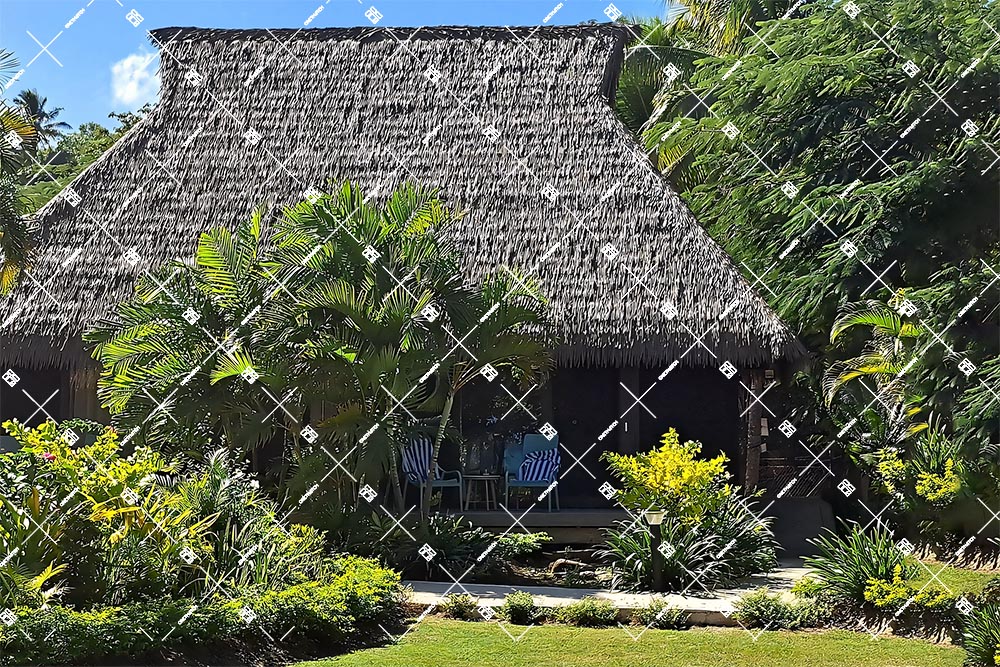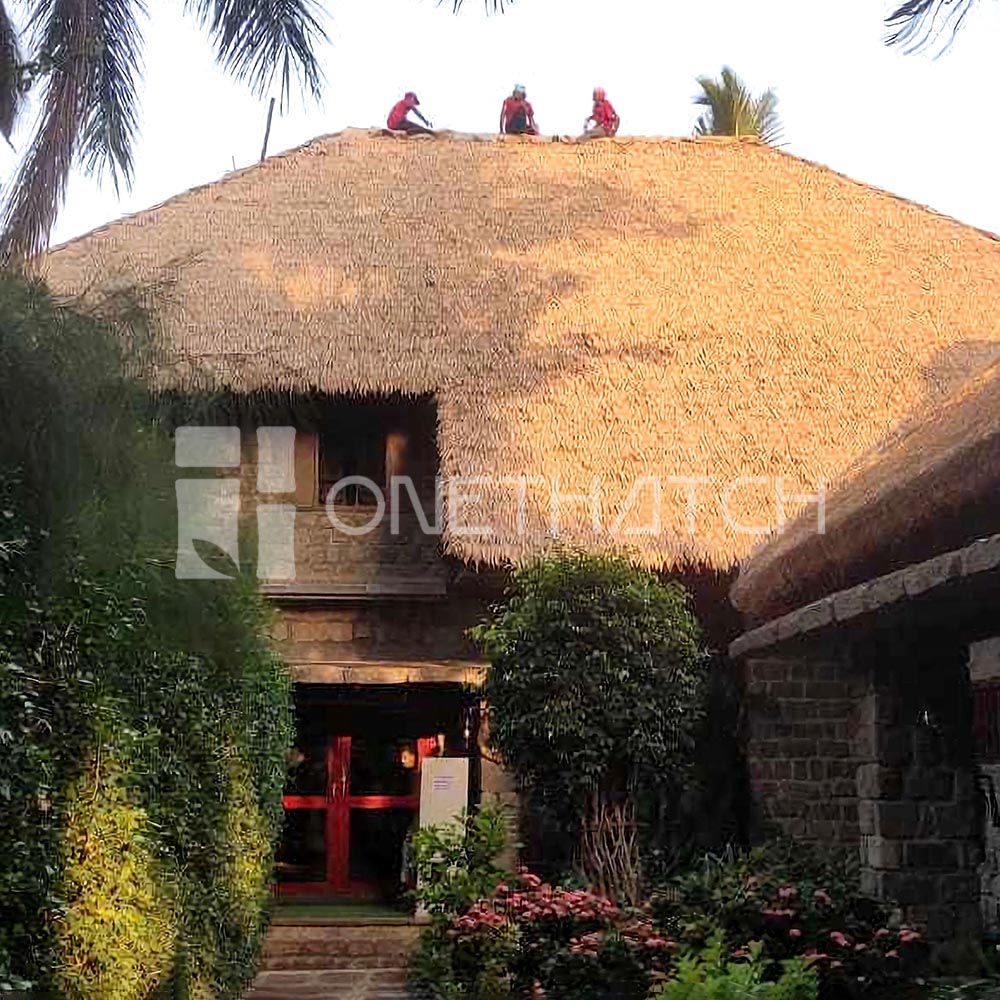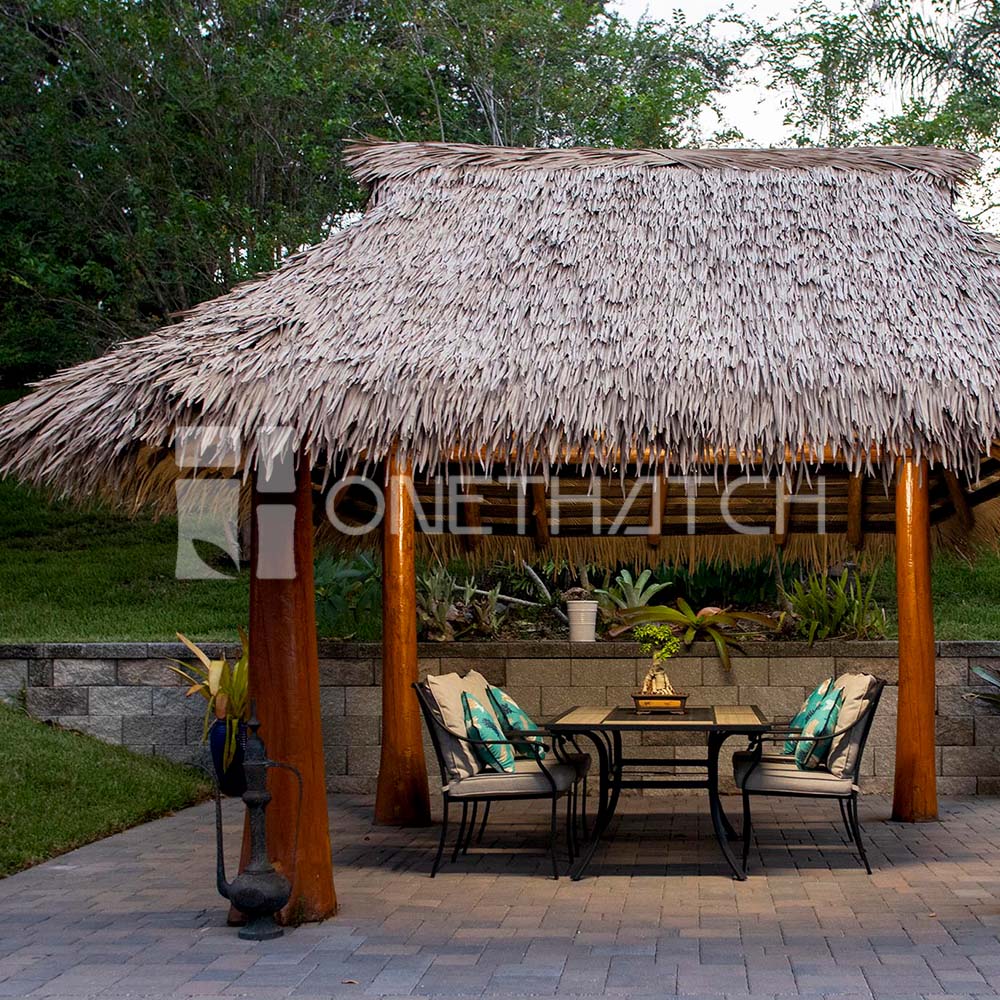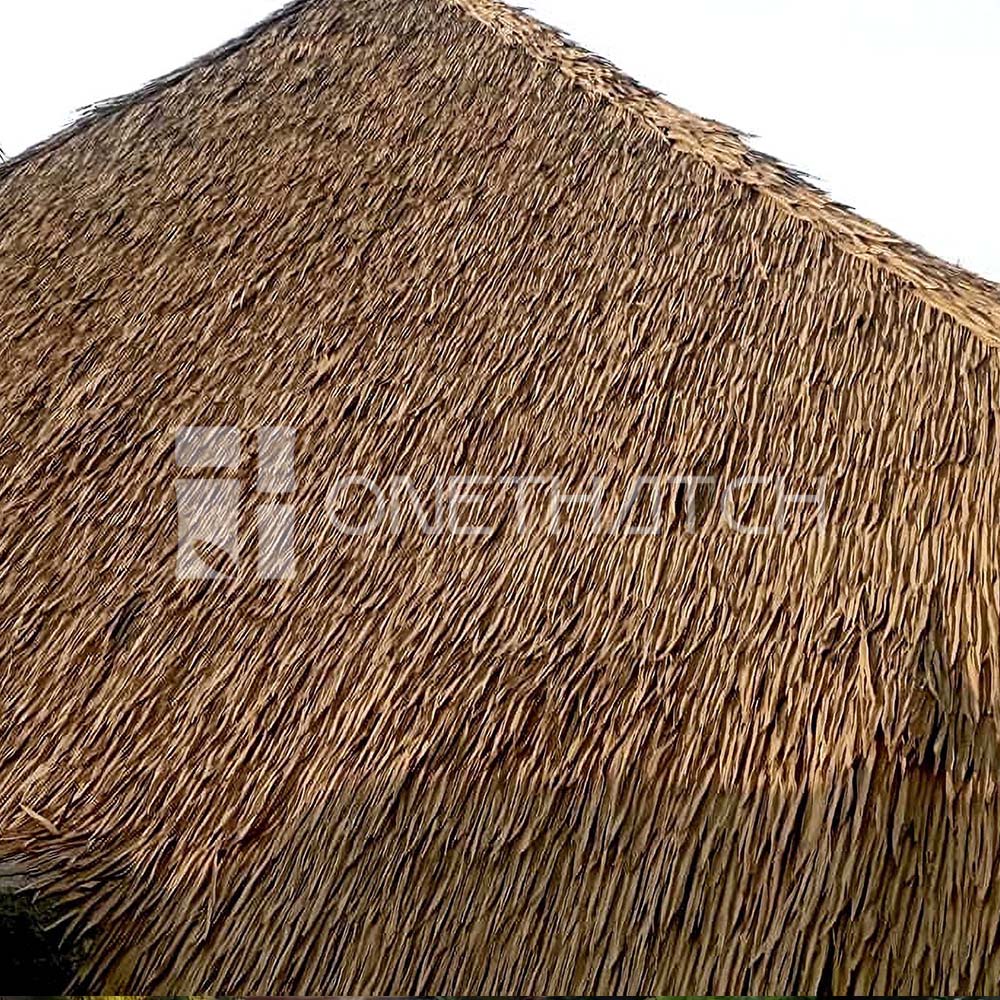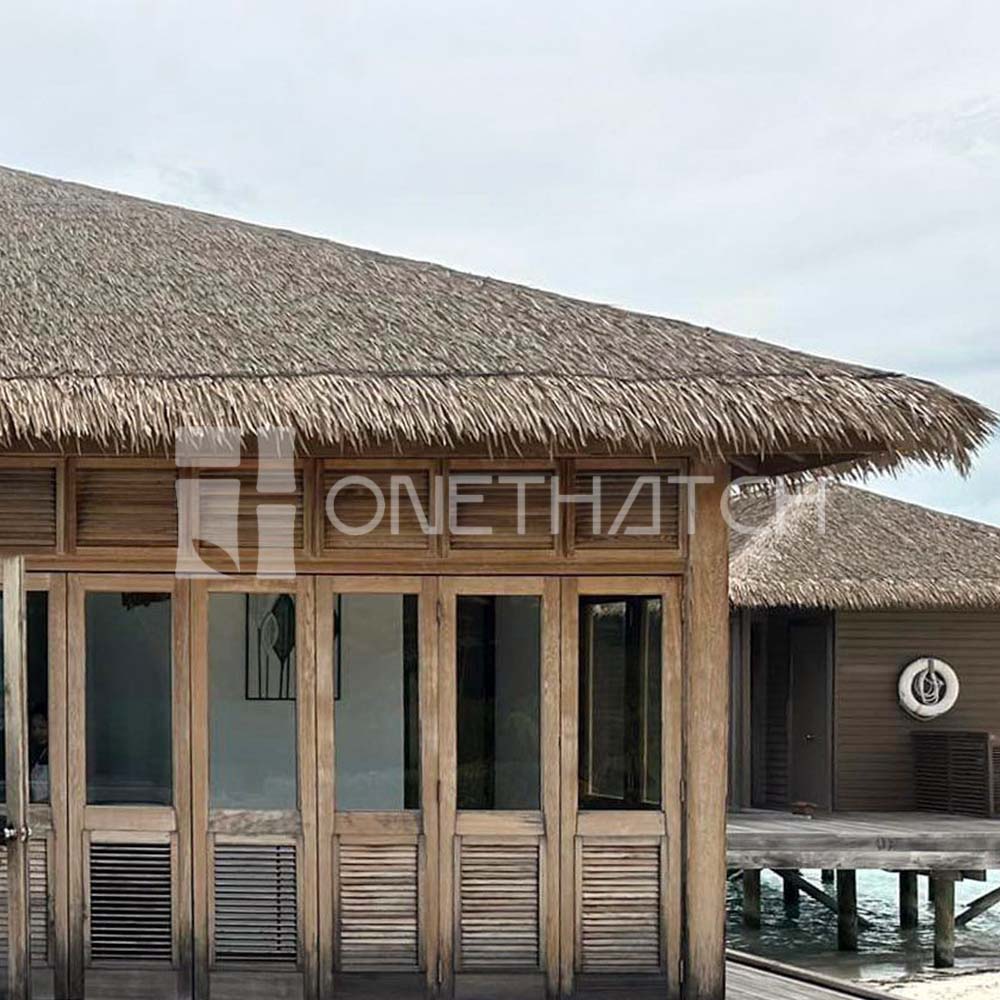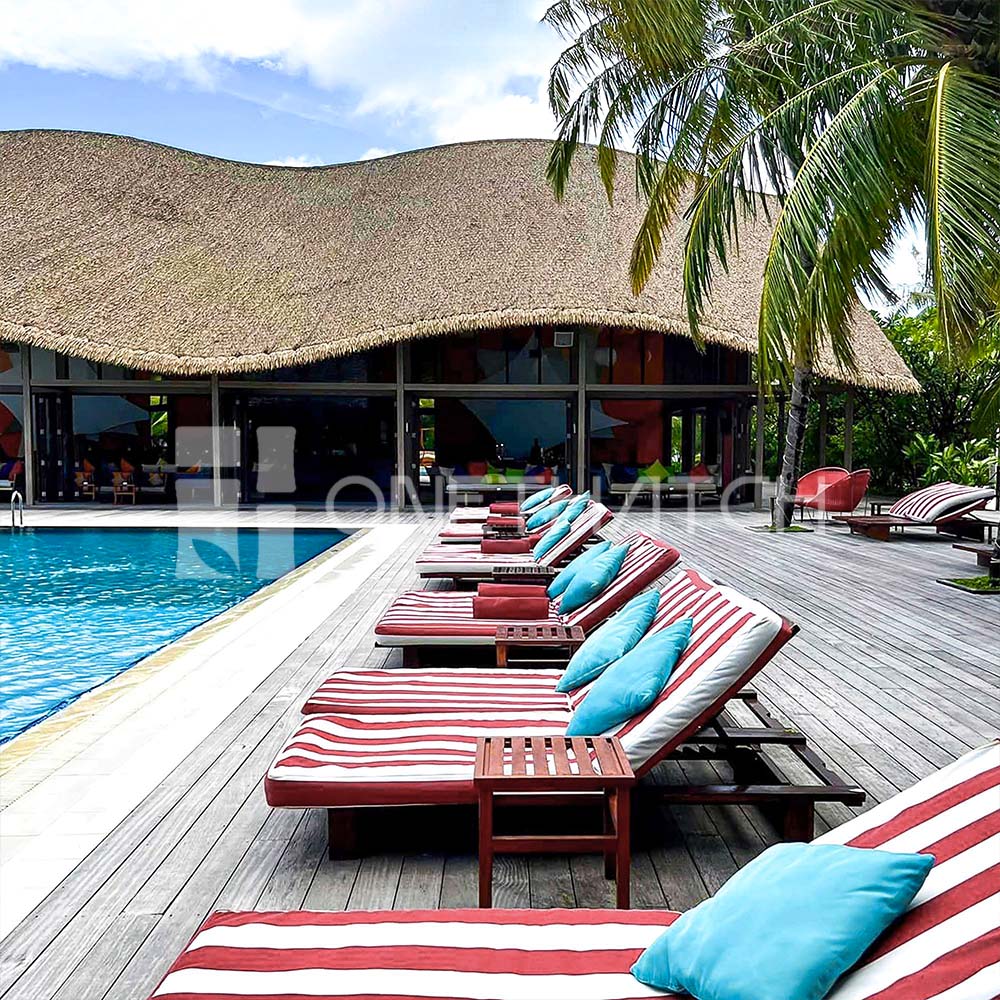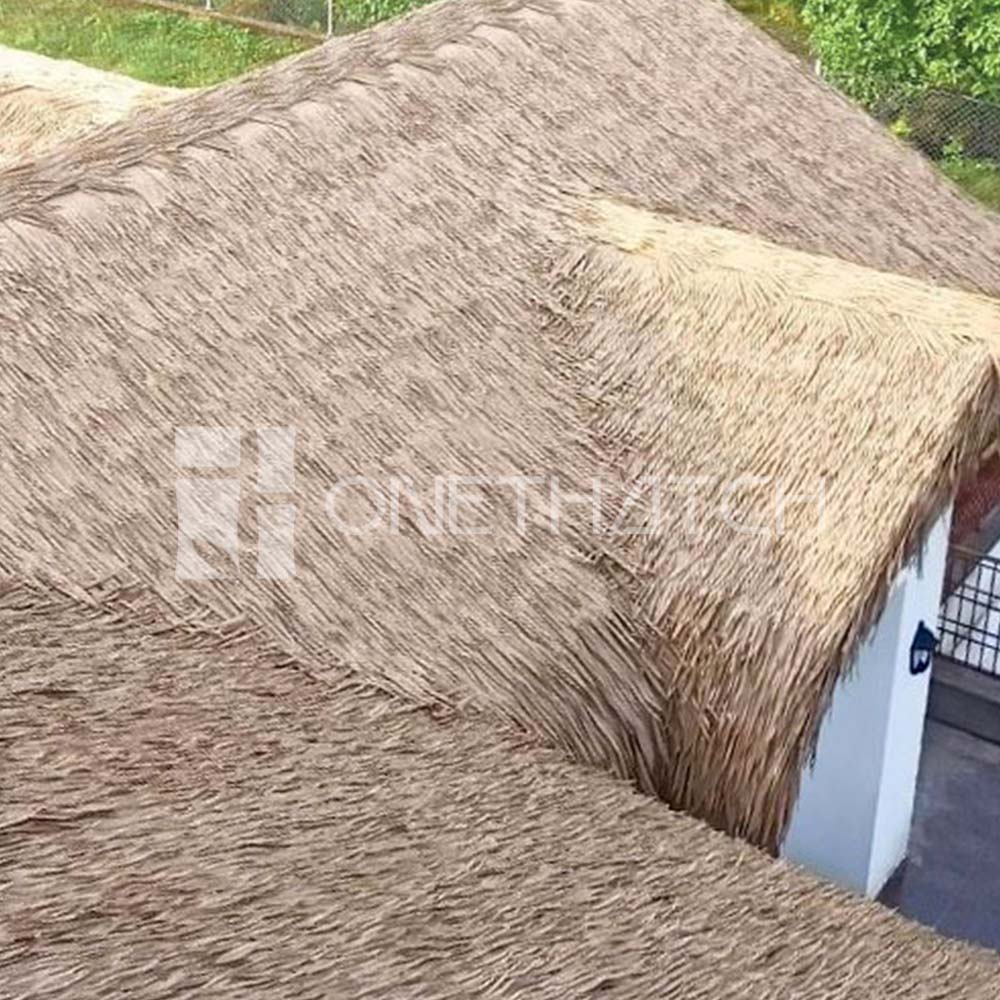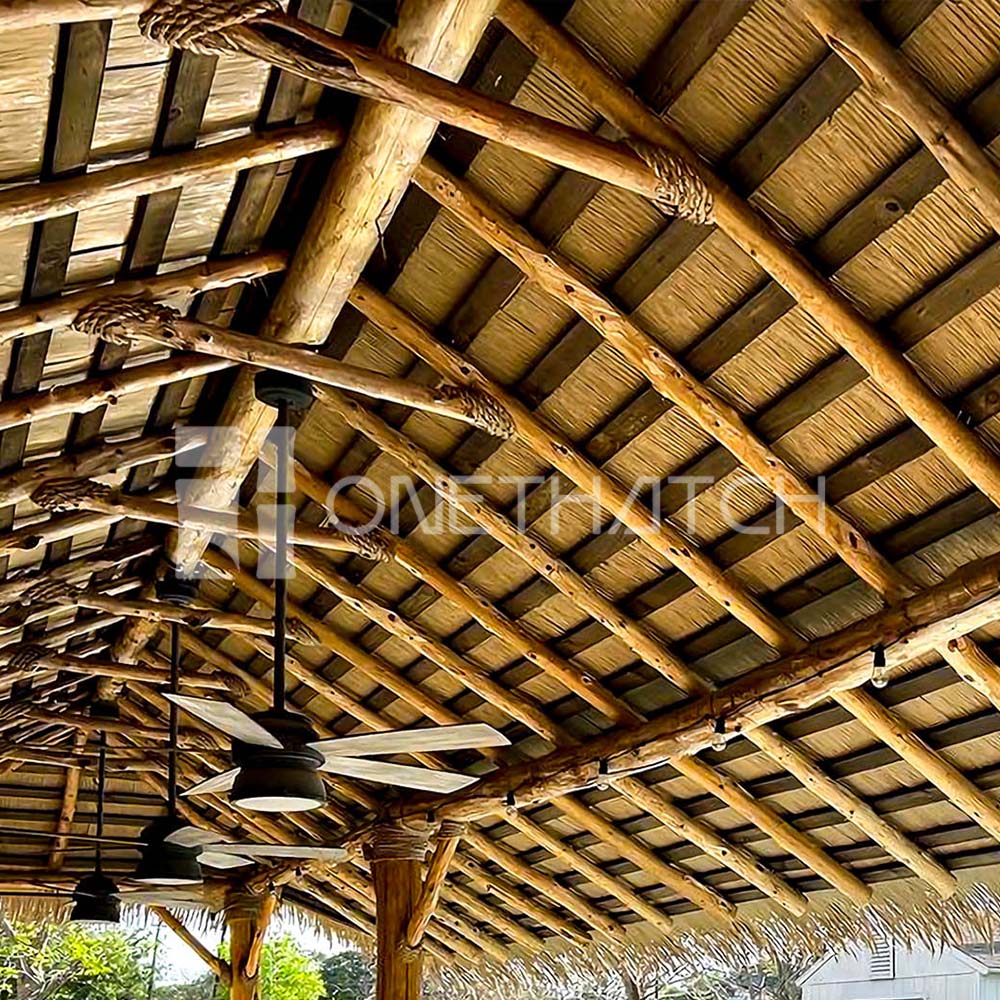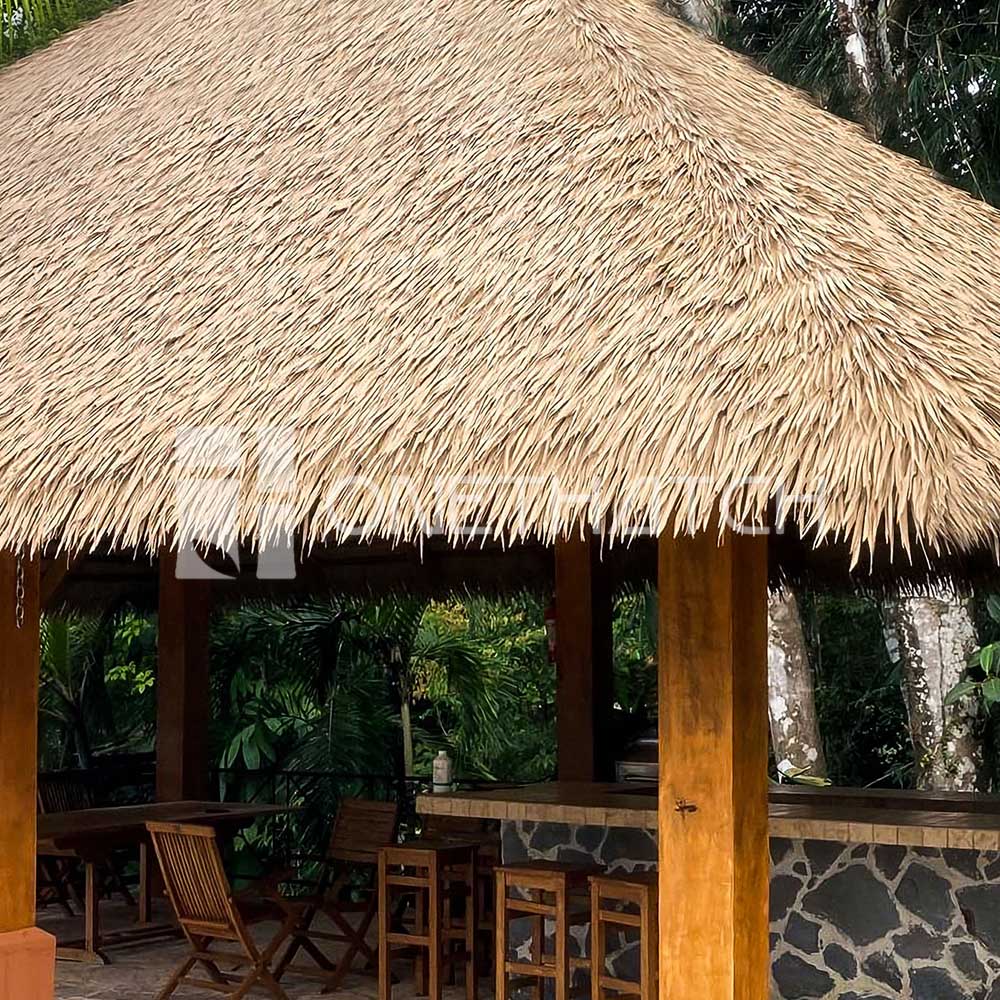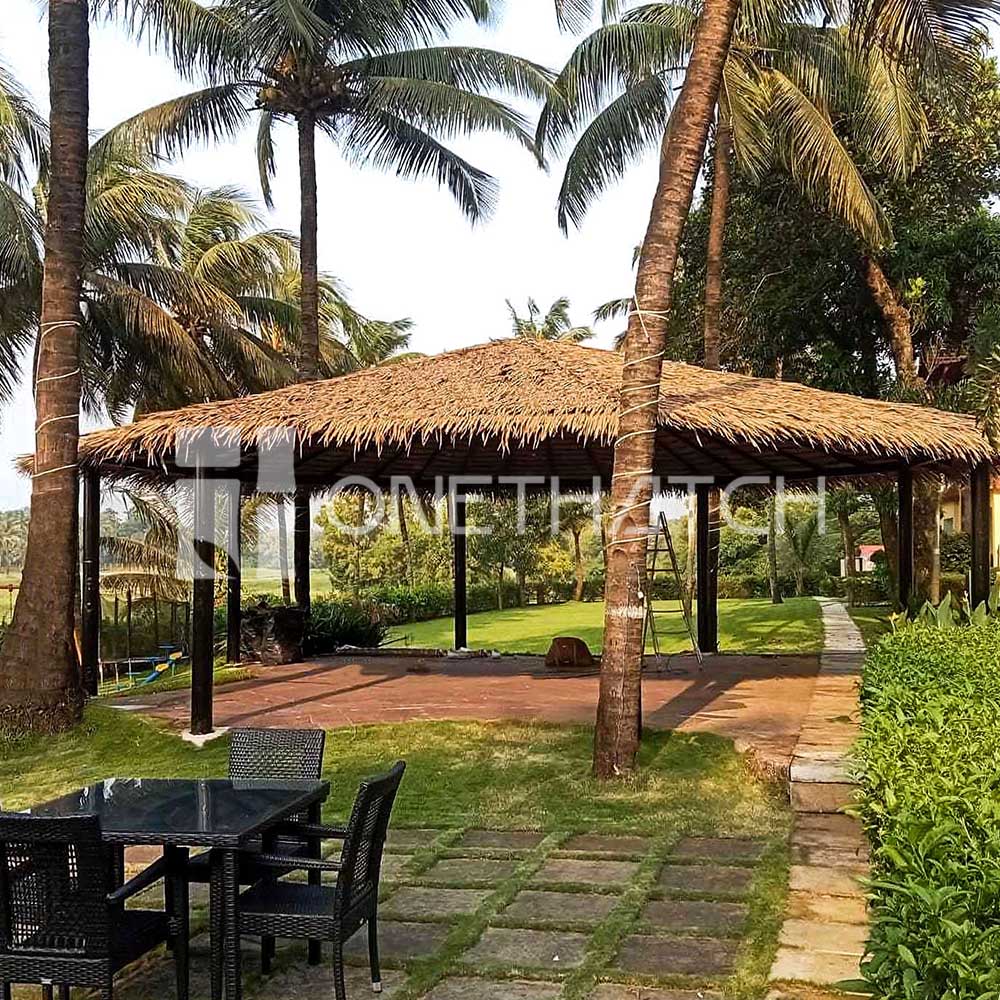Inspired by traditional East African craftsmanship — engineered for modern durability.
01 Fire Resistance That Protects What Matters
Traditionell Makuti thatch, woven from dried coconut leaves, is highly flammable. A single spark can ignite it in seconds.
Synthetic Makuti thatched roofing, made from HDPE polymers, eliminates that danger. Each artificial thatch panel is Class A fire-rated and permanently resistant to ignition — no need for re-spraying with flame retardants every few years.
It complies with international fire-safety standards, offering peace of mind for homeowners, resort operators, and insurance providers across the Kenyan and Tanzanian coasts.
02 No More Pests or Infestations
Natural Makuti attracts insects, rodents, and birds, leading to constant maintenance and unsightly netting.
Synthetic Makuti is pest-proof and does not harbor termites or mold-feeding organisms. It stays clean, sanitary, and visually pristine — ideal for hospitality projects where guest health and appearance matter.
03 Rot, Mold & Moisture Resistance
Humidity, sea spray, and tropical rain quickly damage natural thatch. Synthetic Makuti shingles are non-porous and moisture-resistant, preventing rot, mildew, and odor.
Even in harsh coastal climates like Mombasa or Zanzibar, plastic thatch retains its texture and color for decades, keeping villas and lodges fresh and hygienic.
04 Unmatched Longevity
A natural Makuti roof lasts 3–8 years; synthetic Makuti can exceed 20 years with minimal upkeep.
Each panel includes UV stabilizers that prevent fading under equatorial sunlight. The result is decades of beauty, stability, and value — all while maintaining the authentic Makuti look.
Fact: HDPE-based synthetic Makuti panels have shown over 5,000 hours of ASTM G155 UV testing — ensuring superior weatherability in tropical regions.
05 Long-Term Cost Savings
While natural thatch may seem cheaper upfront, recurring maintenance, fumigation, and re-thatching make it costlier in the long run.
Artificial Makuti requires no chemical treatments, no pest control, and only occasional inspections. Installation is also faster, reducing labor costs.
| Cost Factor | Natural Makuti | Synthetic Makuti |
|---|---|---|
| Fire treatment | Every 2 years | Never required |
| Pest control | Frequent | None |
| Re-thatching | 3–8 years | 20 + years |
| Annual upkeep | Hoch | Minimal |
| ROI | Poor | Excellent |
Ergebnis: Lower total ownership cost and faster payback for resort and villa projects.
06 Eco-Friendly & Sustainable
Harvesting palm leaves for Makuti thatch contributes to deforestation along Africa’s coastlines.
Synthetic Makuti provides an eco-friendly alternative — made from recyclable HDPE, it reduces natural resource depletion and eliminates toxic runoff from chemical treatments.
Many systems qualify for LEED green-building credits, helping eco-resorts align with sustainability goals.
07 Built for Storms and Tropical Weather
Heavy monsoon rains, UV radiation, and high winds destroy natural Makuti within years.
Synthetic Makuti thatched roofs are engineered for wind resistance up to 200 km/h und 100% waterproof performance.
Their interlocking design prevents uplift and leakage even during tropical storms, making them ideal for coastal resorts, lodges, and restaurants exposed to the Indian Ocean climate.


